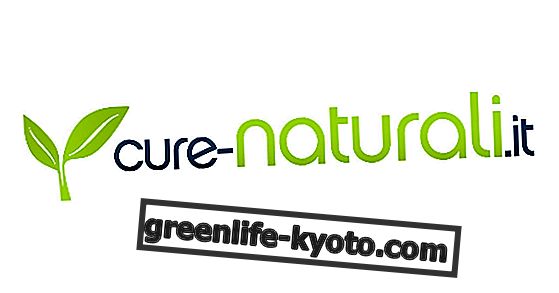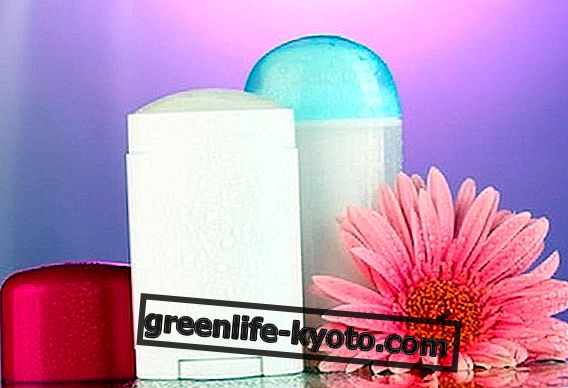The essential oil of red thyme is derived from Thymus vulgaris, a plant of the Lamiaceae family . Known for its many properties, it is used as a tonic, antibiotic and anti-inflammatory . Let's find out better.
>

Properties and benefits of the essential oil of red thyme
Invigorating the nervous system, if inhaled, it has a stimulating and restorative action . It is useful in cases of physical and mental fatigue, headache, fatigue. Improves memory and brain activity, counteracting insomnia and depression.
Antibiotic: it is one of the most powerful remedies against bacterial infections affecting the urinary tract, the respiratory system and the intestine , caused by bacteria proteus mirabilis, enterococci, staphylococci, streptococci, pneumococci, alcaiescens dispar, neisseria, corinebacteria, in the presence of candidiasis, cystitis enterocolitis, leukorrhea.
Balsamic helps to thin and expectorate the phlegm from the bronchi and lungs, it blurs the congestions of the oral cavity, the throat, the pulmonary mucosa, and the nasal passages. For these properties it turns out to be one of the elective remedies against cough, bronchitis, pertussis, otitis, sinusitis, colds, and in colds.
Anti-inflammatory, for external use, thanks to the analgesic action, it can be massaged in case of rheumatic pain, arthritis, bruises, sprains and muscle tears.
Antiparasitic eliminates various types of parasites, which afflict the skin (scabies, lice, etc.) and which cause dermatitis, on which it also has a healing action, and intestinal ones (tapeworm).
The essential oil of red thyme among the remedies against cystitis: discover the others

Description of the plant
Thyme grows in Europe in the western-Mediterranean area, it can go up to considerable heights (1500 m). Spontaneous or cultivated, Thymus vulgaris is a species that prefers dry environments or cliffs and light, calcareous, draining and sunny soils.
Shrubby, aromatic, perennial plant up to 30 cm tall with tortuous and woody stems and with a square section. The small leaves are aromatic, the flowers have a pink corolla with 5 irregular petals and 4 stamens.
Part used
Flowering tops
Note the essential oil of red thyme
Base note, warm, pungent, intense, balsamic, strongly aromatic odor
Extraction method
Steam current distillation
Use and practical advice on essential oil of red thyme
Environmental diffusion : 1 gc for every square meter of the environment in which it is spread, using essential oil burners or humidifier of the radiators, helps purify the air and avoid the risk of infection in the rooms of sick people.
Massage Oil : dilute 10 drops in 100 ml. of sweet almond oil and rub in case of lumbago bruises; hematomas; muscle aches and tears. Massage the painful part until completely absorbed to take advantage of the pain-relieving action, or to tone the muscles, before or after physical activity.
Suffumigi : put 6 drops of thyme essential oil in a basin of boiling water. Cover the head with a towel and inhale with the nose with the mouth closed, interrupting from time to time, until the water releases more steam, in the presence of sinusitis, colds, cough
Contraindications of the essential oil of red thyme
There are two essential oils of thyme: the first is a red liquid (red thyme - Thymus vulgaris ) with a hot and intense odor, it must not be used in pregnancy and by those suffering from high blood pressure, epileptic condition, hyperthyroidism.
The second, light-colored (white thyme - Thymus serpyllum) and fresh and delicate fragrance, is often adulterated with pinene, which makes it highly irritating. For this reason it is advisable to purchase 100% pure essences.
Background
The name of the plant comes from the Greek term thymos, or thumòs, which means "courage".
The Egyptians already knew its powerful antibiotic activity, so much so that it was used, as an ingredient, in embalming practice, to stop the process of rotting of tissues.
Traces of his knowledge can be found in the writings of Hippocrates and Dioscorus, as it was used by the Greeks to make fumigations to avert the infection of infectious diseases.
The philosophers of ancient Rome used to drink an infusion of thyme before dedicating themselves to their studies, as they believed that it invigorated the mind and favored concentration and determination .
In the Middle Ages, the doctors of the Salerno School advised depressed people to breathe the scent of thyme directly from the plant.
In popular tradition, the thyme is used not only as a spice in the treatment of respiratory and urinary infections, especially for coughs and cystitis, and for these properties, it is found as "the antibiotic of the poor". The Greeks used to carry out fumigations to combat infectious diseases.













